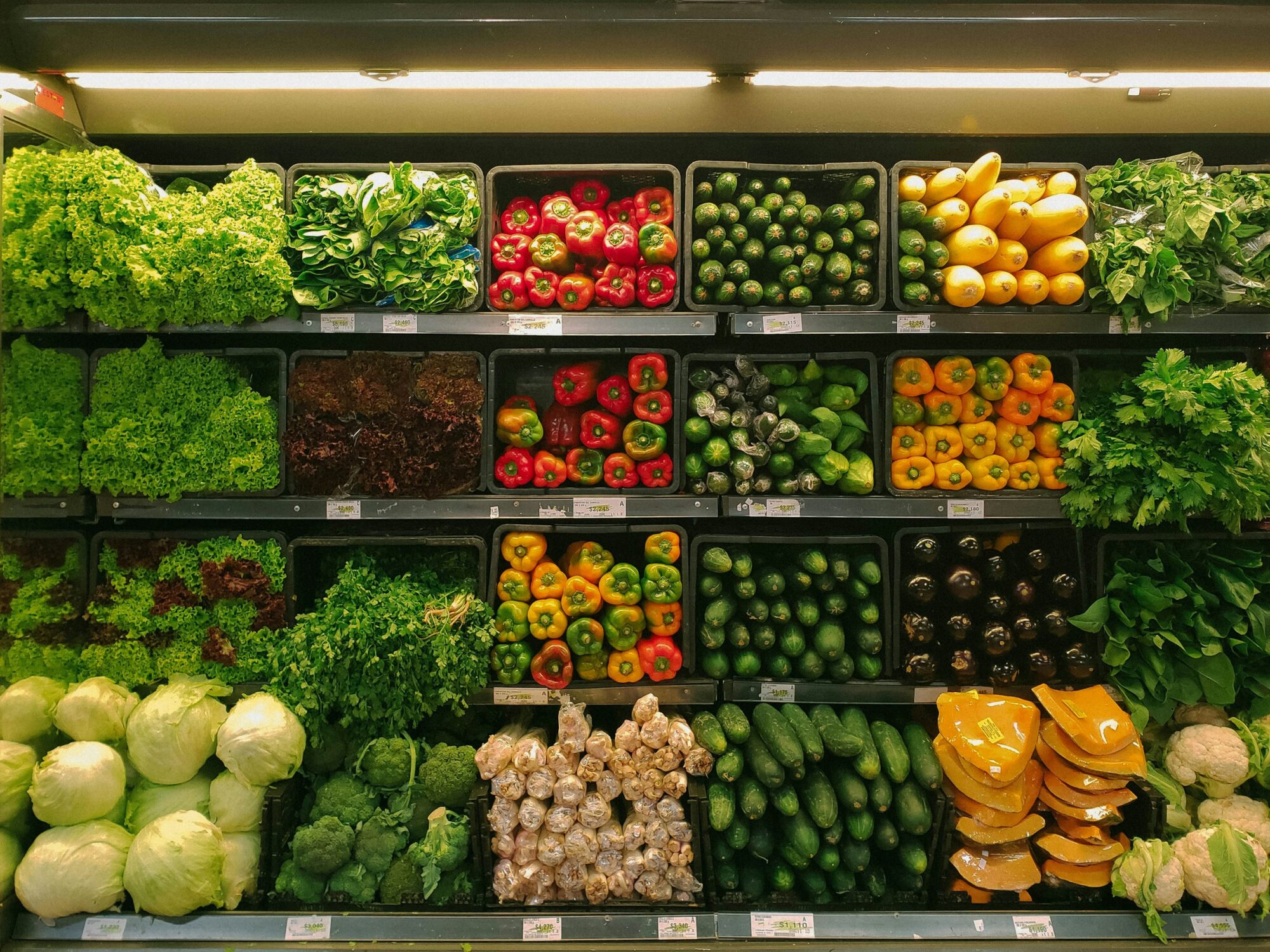Inflation is back on the political agenda. After a brief hiatus, price increases are once again expected in Canada, this time because of a looming trade war with the United States. 1
Initially driven by supply shocks from the COVID-19 pandemic and the war in Ukraine, wild volatility in the prices of commodities such as wheat, gas, and oil has had knock-on effects on the cost of transportation, groceries, and other essential consumer goods since 2021. Voters have rebelled as a result. Whether or not governments are truly to blame for recent price increases does not appear to matter to electorates. Instead, voters have punished governments across the political spectrum who appear out of touch with middle and working-class voters and incapable or unwilling to make life more affordable. 2
Even though the inflation of the past several years has now largely subsided, it was too late for the Biden administration and other incumbent governments that faced re-election in the period before higher interest rates gradually restored price stability at the expense of working and middle-class jobs.
Political and business leaders both claim to be helpless in the face of inflation. Over the course of this most recent inflationary surge, Trudeau’s federal government made half-hearted attempts to convince the CEOs of the largest Canadian grocery companies to lower prices. Yet these large businesses claimed to be mere price-takers subject to global events that raise their upstream costs and force them to increase prices in response. Facing backlash for increasing food prices, Galen Weston, the CEO of Loblaws, claimed that “the idea that grocers are causing food inflation is not only false, it’s impossible.” 3
Since the 1970s, politicians have largely punted responsibility for inflation onto central banks. Yet, central banks have limited tools to fight inflation, relying primarily on their power to influence short-term interest rates: a blunt tool that increases borrowing costs in an attempt to reduce demand in the economy. Although central banks attempt to engineer “soft landings,” in which inflation comes down without increasing unemployment and sending the economy into a recession, this result is rarely achieved. 4
Furthermore, interest rate policy is less effective at addressing the type of inflation generated by short-term supply shocks, especially when these shocks lead to markups in the prices of key goods. Often termed “sellers’ inflation”, this economic phenomenon consists of supply shocks that drive up inflation by constraining the supply of goods and providing cover for companies downstream of bottlenecks to raise their prices. Slowing the entire economy does not address the shortage of goods or the market conditions that allow for price hikes.
Fortunately, there are alternative options that governments can use to address inflation when it is driven by price increases caused by supply chain disruptions rather than excess demand in the economy.
Recently, both mainstream economic institutions and more heterodox research have recognized that corporate concentration has amplified this recurring global crisis-driven inflation, allowing for record profits at the expense of consumers and wage earners. 5 This work has generated a suite of policies that can be implemented to maintain price stability against such transient shocks.
Several governments employed these solutions in the face of the inflationary crisis of the past several years, succeeding in maintaining the affordability of key goods while finding political success at the polls. 6
Sellers’ inflation explains how market power allows large companies to extend the effects of economic disruption to their benefit, even after the crisis has abated.
However, even if a government came to power in Canada with a more serious commitment to achieving affordability by asserting control over the prices of essential goods, their ambitions would be complicated by the federal-provincial division of powers, which requires a coordinated economic response from both levels of government. Consequently, novel institutional strategies are required to overcome the constraints of federalism and deliver economic policy outcomes that are both effective and popular.
The Playbook
Isabella Weber is a German economist who has championed the theory of sellers’ inflation, originally developed in the 1960s by Abba Lerner. Sellers’ inflation explains how market power allows large companies to extend the effects of economic disruption to their benefit, even after the crisis has abated.
This happens in three stages. First, a crisis induces a price spike in systemically significant upstream input goods. This could consist of a war that raises the global price of natural gas, or a sustained extreme weather event that devastates food supplies and hence increases costs. 7 At this stage, upstream firms pass higher prices downstream, given the shortage of key inputs.
In stage two, however, these price increases propagate across the economy as large downstream firms increase their prices to protect their margins. According to Weber, firms set prices by “targeting markups over rough estimates of average costs as long as this does not undermine their market share.” 8 They cannot anticipate minute changes in input costs caused by rapidly changing global events, so they approximate by increasing costs generally across a portfolio of goods, so long as that does not expose them to competitive pressures. Empirical observations of earnings calls during these global events show that firms can count on public awareness of the crisis to make consumers more willing to accept higher prices, even across a broader section of final goods. 9
The localized shock eventually transforms into a generalized price increase when a small number of firms in a concentrated industry anticipate that their competitors will make similar decisions. This “implicit coordination” allows for a coordinated price increase in conditions of imperfect competition that is difficult for regulators to pinpoint and prosecute in real time.
Finally, in stage 3, labour responds to the changing price conditions. If workers demand higher wages in response to the increased cost of goods, and firms respond by increasing prices further to account for paying higher wages, price increases can spiral upwards. In some cases, such as when consumers are acutely aware that the price shock should have abated, prices may come down gradually without intervention, but the government may have already paid too high of a political price.
Weber argues, in an earlier edition of this journal, that governments should respond to this pattern of crisis- and corporate opportunism-driven inflation with a variety of measures, including supply chain monitoring, price controls and windfall profit taxes, and buffer stocks of essential goods. 10
Supply chain monitoring involves setting up the ability to track business risks and vulnerabilities, from primary goods through wholesale and distribution networks to consumer pathways. This is something that the Biden administration began to implement following the COVID-19 pandemic for a set of key industries, including energy, agriculture, transportation, and information and communications technology. 11 This would provide an essential baseline tracking function for the economy and an ability to identify the likelihood of major incoming price shocks.
Price controls and windfall taxes limit the price of essential goods that people have no choice but to purchase. The increased cost of these goods induces the political consequences of inflation, as voters come to feel that the government is either unable or unwilling to address their most pressing economic needs. Either capping prices or taxing profits over a certain amount can disincentivize large companies from opportunistically increasing prices during supply shocks and maintaining these high prices long after operating costs have returned to their pre-shock levels. 12
The success of targeted price controls was demonstrated by the German government’s response to energy price hikes as a result of the war in Ukraine. A sharp increase in gas prices coincided with a similar surge in support for the far-right AfD party, until Germany imposed an “energy price brake” that stabilized costs and undermined the extremists’ appeal. 13
Finally, buffer stocks are a key tool of industrial policy used to regulate prices by purchasing or releasing stockpiles of a key commodity onto the market to stabilize prices in the face of temporary shocks. These are often implemented in tandem with industrial subsidies or guaranteed purchase agreements to ensure stable production of key economic inputs. 14
Japan and China stockpile rice and pork, respectively, both of which are essential foodstuffs produced domestically that define affordability in their respective countries because of their outsized impact on the national diet. 15 The U.S. has also experimented with using its Strategic Petroleum Reserve (SPR) to stabilize the price and production of oil. Under the Biden administration, the SPR released oil onto the market when global oil prices were high and purchased oil when prices fell below a level that would destabilize production. 16 This has served as an effective tool for muting oil price shocks in the U.S. market throughout the Ukraine war.
Market concentration in key sectors, including groceries, transportation, and commodity production renders Canada particularly vulnerable to the threat of sellers’ inflation. As a result, Canada should seize the opportunity before the next major supply shock to implement a Weber-inspired policy playbook.
Managing Prices in the Canadian Context
Market concentration in key sectors, including groceries, transportation, and commodity production renders Canada particularly vulnerable to the threat of sellers’ inflation. As a result, Canada should seize the opportunity before the next major supply shock to implement a Weber-inspired policy playbook. 17
Unfortunately, Canada’s federal system complicates the implementation of such a playbook. While the federal-provincial division of powers poses a challenge to the effective regulation of economic activity in Canada, the federal government’s ability to organize activities across provincial boundaries and to exert its greater fiscal capacity in service of shared objectives is crucial for the economic management proposed by Weber and others.
Under the Constitution Act, 1867, the federal and provincial governments share authority to regulate the economy across numerous heads of power. Therefore, deploying an effective inflation-fighting toolkit in the Canadian context would require creative institutional and legal configurations.
Historically, broad federal economic regulation has been heavily scrutinized by the courts. A particularly relevant example can be found in the Anti-Inflation Act Reference, a case in which the Supreme Court upheld Pierre Trudeau’s scheme of wage and price controls designed to tame the inflation of the 1970s. Although the Anti-Inflation Act survived constitutional scrutiny, the Court dealt a blow to future federal attempts to implement price controls by upholding the legislation under the rarely used emergency branch of the Peace, Order, and Good Government (POGG) clause. This head of power imbues the federal government with expansive but temporary legislative jurisdiction in the event of an emergency.
The Court rarely applies the POGG emergency branch and would likely be hesitant to enable a new suite of federal inflation-fighting measures absent a clear emergency. 18 Moreover, whatever powers flow through this channel are temporary, meaning Parliament would have to re-justify the existence of an emergency every time it seeks to deploy inflation-fighting tools. Although price increases certainly hurt Canadians, periodic price increases may not constitute an emergency akin to the stagflation of the 1970s, which grounded the constitutionality of the Anti-Inflation Act. Nevertheless, the federal government’s powers under the POGG emergency branch are incredibly vast, making it nearly impossible to challenge federal price controls on the ground that an inflationary surge is not an emergency. 19
The federal government could alternatively attempt to justify inflation-fighting tools as falling within the scope of its s. 91(2) General Trade and Commerce power. Unfortunately, the Court has consistently rejected this head of power as support for federal economic regulation policies. 20 However, a creative legal argument could see the federal government argue that supply shocks are systemic risks to Canadian society. In Reference re Pan-Canadian Securities Regulation, the Supreme Court found that Parliament has legislative authority under s. 91(2) to prevent and control systemic risk in capital markets that could create material adverse effects on the Canadian economy. 21
The federal government could argue that policies such as price controls and the direct regulation of industries that traditionally fall within provincial jurisdiction are necessary to ensure the proper functioning of supply chains and mitigate the risks of inflation. However, the federal government may struggle to prove that supply chain shocks constitute a systemic risk to the national economy in the same manner as financial market collapse. Recent jurisprudence suggests the Supreme Court has returned to a more conservative approach to policing the division of powers, leaving less flexibility for any future expansion of federal jurisdiction under s. 91(2). 22
Finally, in the context of windfall taxes, in particular, Parliament may not be able to ground the enactment of this policy under the federal taxation power. Section 91(3) of the Constitution Act, 1867, enables the federal government to make laws in relation to “the raising of money by any mode or system or taxation.” Yet, courts may not consider the raising of money to be the true matter of a windfall tax. 23 For example, the courts could find the pith and substance of a federal charge or levy on undesirable economic activity, such as price gouging during a supply shock, to be some matter other than taxation, falling under provincial jurisdiction. Nonetheless, the courts are traditionally deferential on matters of taxation, making it possible for a court to find the federal enactment of windfall taxes constitutionally valid.
To address components of the toolkit that the federal government cannot implement unilaterally, we can look to the Council of the Federation, a table at which Canada’s 13 provincial and territorial Premiers meet to discuss issues of shared concern. In response to recent geoeconomic threats, the Council of the Federation has demonstrated novel capacities for coordinated decision-making. Often considered an unwieldy table for delivering unified policy action, this group may be required to coordinate among the various interprovincial tables that presently manage some prices in a limited and piecemeal fashion.
Building an Implementation Toolkit
Implementation of each element of the price management portfolio depends on unique tools with varying institutional and statutory complexity.
Some supply chain monitoring capabilities do already exist in the Department of Transportation. 24 Announced in 2023, the National Supply Chain Office has been tasked with developing and implementing a National Supply Chain Strategy, supporting the federal government’s efforts in responding to supply chain disruptions and enabling data sharing to facilitate strategic policy, regulatory, and investment decisions by governments and industry. If fully empowered to deal with businesses and motivate other levels of government to increase data sharing and share monitoring functions, the National Supply Chain Office could anticipate inflation risks and direct investments to minimize the chance that fragile supply chains result in broad-based price increases.
Price controls will most likely have to be worked out by provinces, given Parliament’s lack of legislative authority over this matter. This would require cooperation by the Council of the Federation to coordinate among the relevant existing interprovincial trade agencies. Something akin to the federal securities regulator, which does not make policy directly but proposes synchronized regulations for provinces to implement, could be a possible model to adopt if it was equipped with the ability to reward provinces that participate in coordinated action.
Both an empowered National Supply Chain Office and a federally orchestrated price control system would depend on coordinating provincial authorities in their respective jurisdictions. Subsidies, purchase agreements, and other incentives have proved to be useful approaches for similar coordination efforts on other important inter-jurisdictional policy files such as daycare and housing zoning reform. A National Supply Chain Office may need to offer subsidies or similar cost-sharing arrangements to motivate private companies and provincial governments to share the proprietary information required for a clear view of the Canadian supply chain ecosystem. As far as price controls are concerned, coordinating provincial authorities in advance of major emergencies is unlikely to happen without similar market-moving rewards offered by the federal government, such as subsidies on input goods or forward purchasing agreements for commodities. Provincial governments could direct these benefits to suppliers in participating jurisdictions in exchange for their cooperation.
Such an approach would build upon existing provincial price-gouging laws, including Ontario’s Anti-Price-Gouging Act, which prohibits companies from raising prices for essential goods during an emergency, and legislation from Atlantic provinces that regulate gasoline prices on the basis of allowed markups over international crude oil prices. 25 These measures currently do not fully prevent energy price shocks, such as those stemming from Russia’s invasion of Ukraine. However, expanding and coordinating these efforts could do more to moderate price shocks.
Finally, establishing buffer stocks should not pose any constitutional issues, and only the federal government has the fiscal capacity to support a buffer stock program. Presently, the agricultural supply management system exerts firm control of the provision of basic inputs for foodstuffs across Canada. The government sets quotas for farmers to produce a certain amount of dairy and poultry products in exchange for purchasing them at fixed prices determined through a process that consults industry, downstream purchasers, and consumers’ representatives. 26
This advanced price control system determines quotas based on projections of consumer demand rather than stockpiling goods in order to release them as needed to mitigate increasing consumer prices. Adapting this system to one that can strategically purchase or release goods to intervene in downstream markets would involve building out new physical infrastructure for the storage of non-perishable goods and ensuring that the stored unfinished products could be put into production in time to address supply shocks. This would be a significant endeavor for the federal government, but one which would yield important leverage to bring consumer-facing firms to the negotiating table, since the government would have some ability to modify the supply of key inputs to their businesses.
Together with visibility over supply chains and cooperation from provinces in legislating final stage prices, this buffer stock system would allow the federal government to understand what consumer-facing companies need to maintain prices at a reasonable level, even in the face of unexpected global turbulence.
Conclusion
A dynamic federal government that seeks the power to implement supply chain monitoring tools, price controls, windfall profit taxes, and buffer stocks would have to create new leverage and employ effective institutional strategies if it hopes to deliver economic stability.
This approach is best developed as a set of precautionary measures rather than an emergency response once the inflation shock has arrived. Without the federal government’s expanded statutory authority during an emergency, implementation likely requires developing the institutional capacity to wield carrots and sticks to coordinate policy across multiple levels of government and bring corporations operating across provincial boundaries, and often also national contexts, to the table.
This toolkit is powerful but not universally applicable. In sectors such as electricity and telecommunications, where durable commodities cannot be stockpiled to regulate prices and natural monopolies form because of economies of scale, cooperative or public ownership may still need to be explored to ensure price stability in the face of increasing threats. Overall, a combination of subsidies, taxes, purchase agreements, and changes to ownership structures is likely to be most effective at building a toolkit of policies that obtains stability in prices for the essential goods that, in turn, do much to determine a government’s political support. A government that can track the flow of goods through the economy in real time and intervene when needed will stand a better chance of fighting off the overlapping threats looming on the horizon.
Notes
- Evaluating the potential impacts of US tariffs – Bank of Canada ↩︎
- Democrats join 2024’s graveyard of incumbents – Financial Times ↩︎
- Government calls for meeting with CEOs of Canada’s biggest grocery chains to talk food prices | CBC News ↩︎
- Canada’s fight against inflation: Bank of Canada could induce a recession | CCPA ↩︎
- New Data on Continued Record Profits in Canadian Food Retail – Centre for Future Work; Taking Aim at Sellers’ Inflation by Isabella M. Weber – Project Syndicate; How tit-for-tat inflation can make everyone poorer; Europe’s Inflation Outlook Depends on How Corporate Profits Absorb Wage Gains; Inflation Heresies by Dani Rodrik – Project Syndicate ↩︎
- The Governments That Survived Inflation | Foreign Affairs; Capping Prices and Profits in the Fight for Affordability with Angella MacEwen | Perspectives Journal ↩︎
- Canadian Grocery Profitability: Inflation, Wages and Financialization – Broadbent Institute ↩︎
- Implicit Coordination in Sellers’ Inflation: How Cost Shocks Facilitate Price Hikes – Political Economy Research Institute ↩︎
- Sellers’ inflation, profits and conflict: why can large firms hike prices in an emergency?” – Review of Keynesian Economics ↩︎
- Profits, Inflation and Survival in an Age of Emergencies: Why We Need a New Paradigm – 2024 Ellen Meiksins Wood Lecture | Perspectives Journal ↩︎
- Takeaways from President Biden’s Supply Chain Plan for 2022 ↩︎
- Can Price Controls Be Optimal? The Economics of the Energy Shock in Germany ↩︎
- ibid. ↩︎
- Implicit Coordination in Sellers’ Inflation: How Cost Shocks Facilitate Price Hikes ↩︎
- Rice price rise pushes Japan to tap strategic reserves ↩︎
- Reimagining the SPR ↩︎
- Corporate concentration | Food Policy for Canada; Competition in Canada from 2000 to 2020: An Economy at a Crossroads; Canadian Grocery Profitability: Inflation, Wages and Financialization – Broadbent Institute ↩︎
- Hogg, Constitutional Law of Canada, 5th Edition, 17:11 ↩︎
- Hogg, Constitutional Law of Canada, 5th Editiion, 17:10 ↩︎
- Hogg, Constitutional Law of Canada, 5th Editiion, 17:10 ↩︎
- 2018 SCC 48 (CanLII) ↩︎
- Reference re Impact Assessment Act, 2023 SCC 23 (CanLII) ↩︎
- Hogg, Constitutional Law of Canada, 5th Edition, 17:11 ↩︎
- Minister of Transport announces launch of the National Supply Chain Office to strengthen Canada’s supply chains and increase the economy’s competitiveness ↩︎
- Minister of Transport announces launch of the National Supply Chain Office to strengthen Canada’s supply chains and increase the economy’s competitiveness ↩︎
- Canadian Dairy Commission ↩︎







